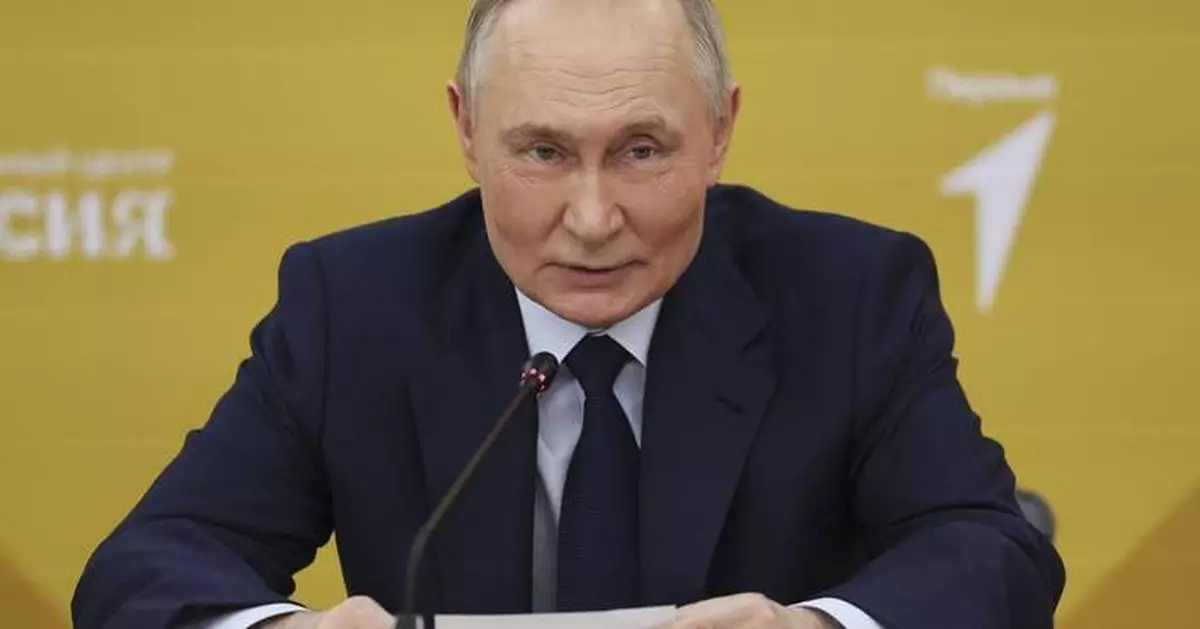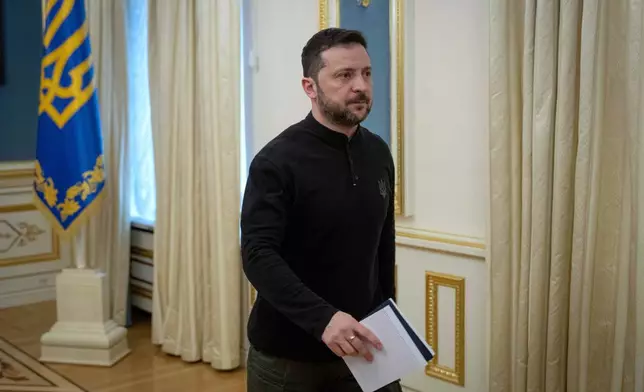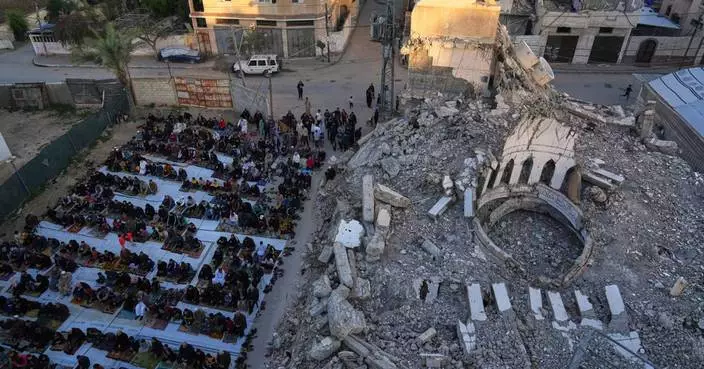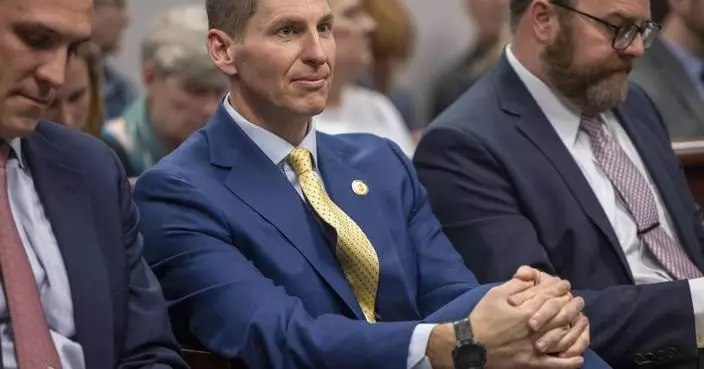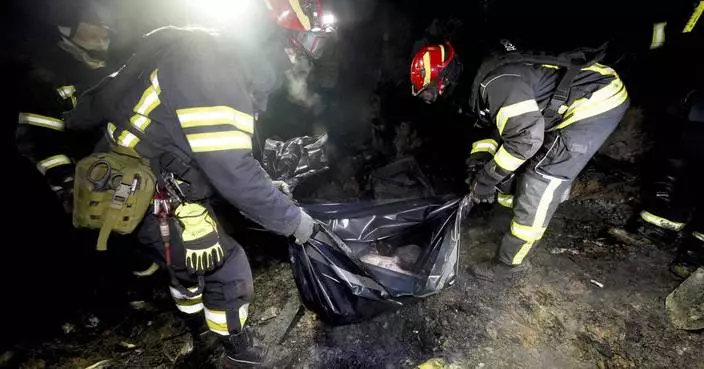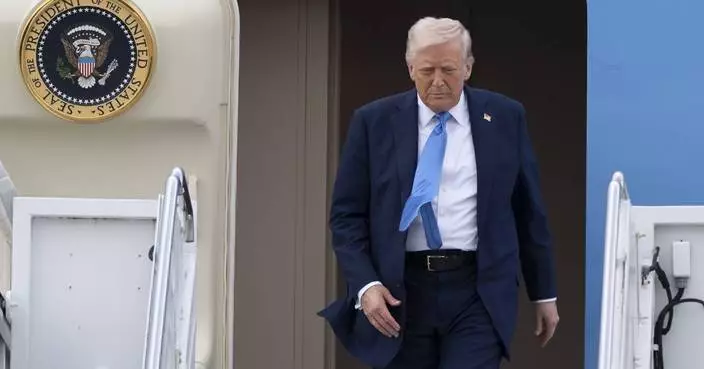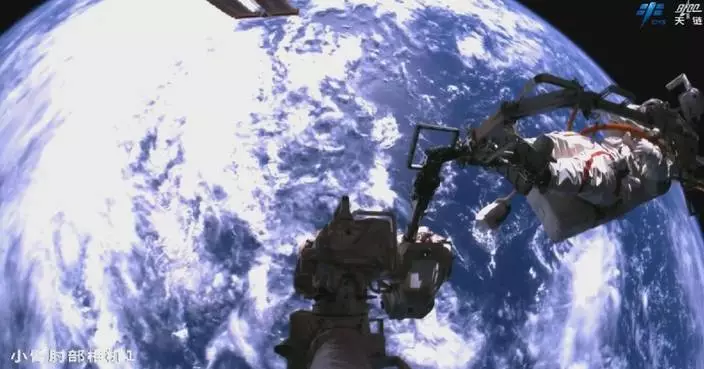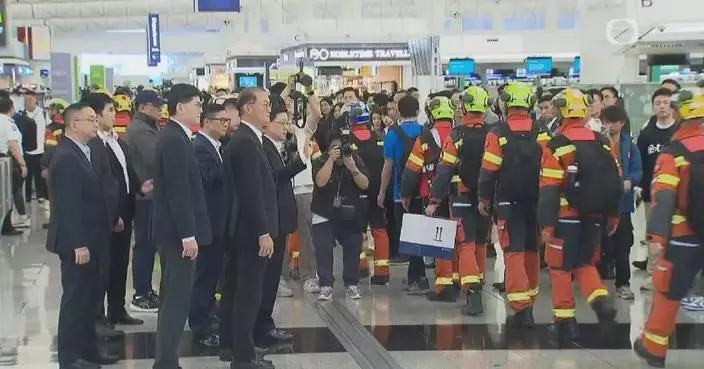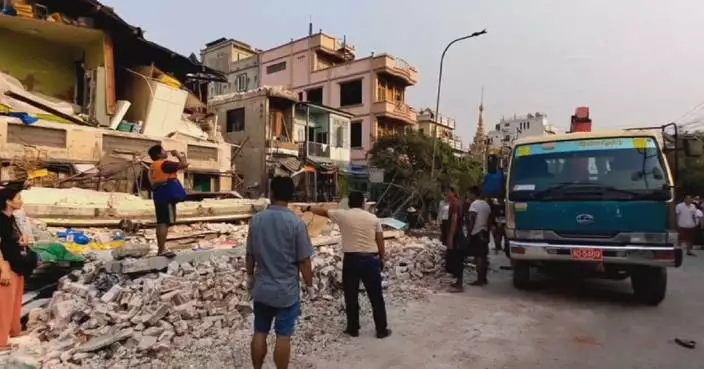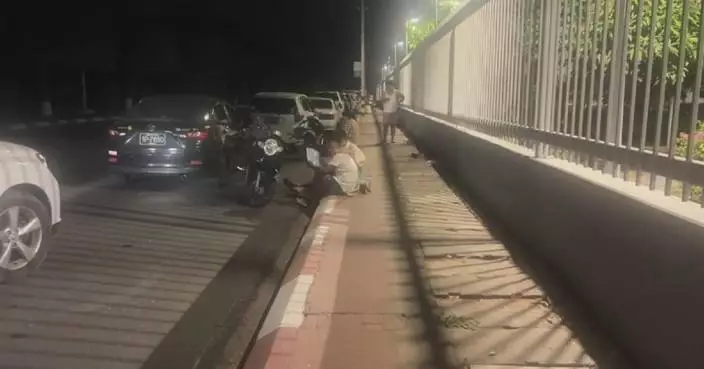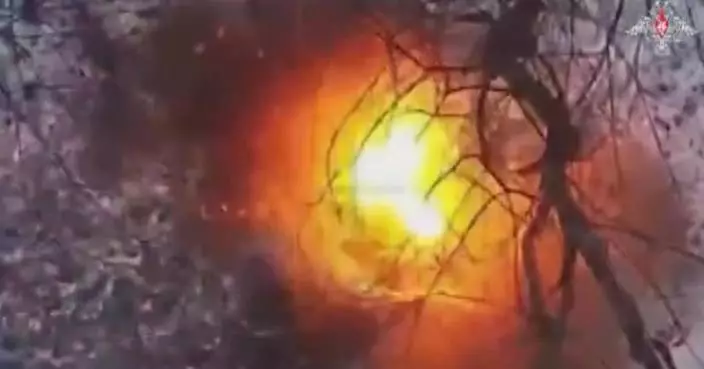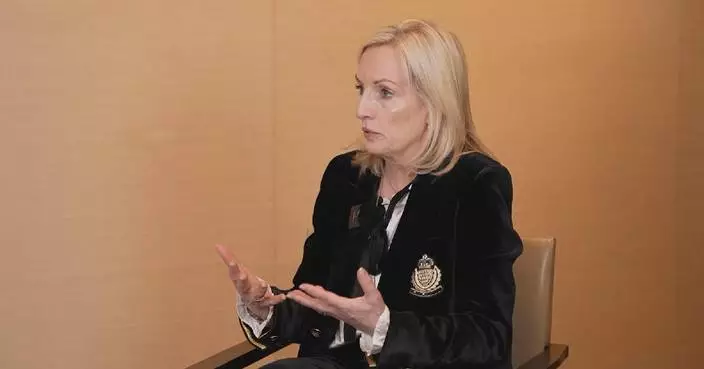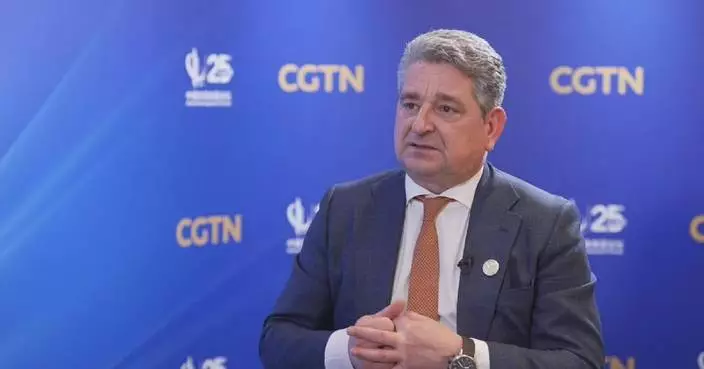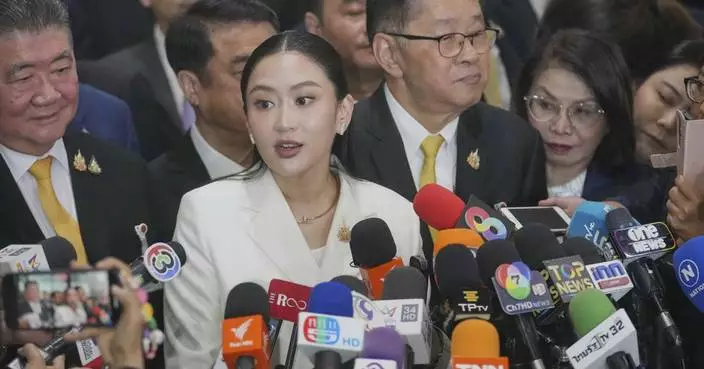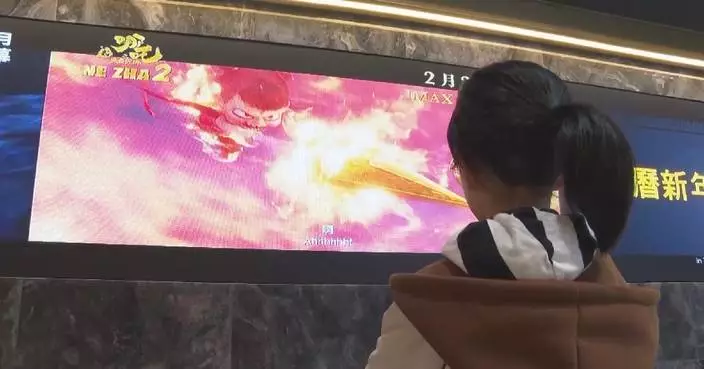KYIV, Ukraine (AP) — After three days of intense negotiations, the Trump administration, Ukraine and Russia agreed to a limited ceasefire in which the key details, including what was covered and how it will start, were disputed by the warring sides, indicating the road to a complete truce will be long and mired with contention.
The negotiations focused on easing Black Sea shipping and halting long-range strikes on energy infrastructure, relatively low-hanging fruit that both sides had experience in negotiating before the U.S. brokered indirect talks.
Click to Gallery
In this photo provided by Ukraine's 93rd Kholodnyi Yar Separate Mechanized Brigade press service, a woman takes shelter in the basement of a multi-apartment building in Pokrovsk, the site of heavy battles with Russian troops, Donetsk region, Ukraine, Tuesday, March 25, 2025. (Iryna Rybakova/Ukraine's 93rd Mechanized Brigade via AP)
In this photo taken on March 21, 2025 and provided by Ukraine's 24th Mechanized Brigade press service on March 24, 2025, servicemen attend a dedication ceremony for soldiers near the frontline in the Donetsk region, Ukraine. (Oleg Petrasiuk/Ukraine's 24th Mechanized Brigade via AP)
Workers of DTEK company work on a site of a substation destroyed by a Russian drone strike in undisclosed location, Ukraine, March 25, 2025. (AP Photo/Evgeniy Maloletka)
A worker of DTEK company cuts metal structures during repair works of a substation destroyed by a Russian drone strike in undisclosed location, Ukraine, March 25, 2025. (AP Photo/Evgeniy Maloletka)
Ukrainian President Volodymyr Zelenskyy leaves the room after his briefing in Kyiv, Ukraine, Tuesday, March 25, 2025. (AP Photo/Efrem Lukatsky)
Russian President Vladimir Putin speaks during a meeting of the supervisory board of the Movement of the First, Russian public-and-state children and youth organisation, at the Russia National Centre in Moscow, Russia, Wednesday, March 26, 2025. (Vyacheslav Prokofyev, Sputnik, Kremlin Pool Photo via AP)
While much is yet unknown, here is a breakdown of the key elements of the partial ceasefire and what is at stake in the coming weeks as talks continue.
Conflicting statements emerged immediately after the talks on Tuesday. Both sides differed on the start time of halting strikes on energy sites and accused the other of violating the ceasefire.
Russia also conditioned its part in opening Black Sea shipping on the U.S. lifting sanctions, which Kyiv dismissed.
Russian officials have greeted the results of the talks with optimism, and Ukrainian President Volodymyr Zelenskyy described it as a good start, though some Ukrainian officials have expressed discontent.
“Something tells me this is more advantageous for the enemy,” Ukrainian lawmaker Yaroslav Zheleznyak told the Interfax Ukraine news agency.
The U.S. said Tuesday it had reached a tentative agreement with Ukraine and Russia to stop fighting and ensure safe navigation in the Black Sea in separate talks with the two sides.
Details of the deal were not released, including how or when it was to be implemented and monitored, but it appeared to mark another attempt to ensure safe Black Sea shipping after a 2022 agreement that was brokered by the U.N. and Turkey was halted by Russia one year later, in July 2023.
Russia said the Black Sea deal announced Tuesday could only be implemented after sanctions against the Russian Agricultural Bank and other financial institutions involved in food and fertilizer trade were lifted and their access to the SWIFT system of international payments was ensured.
Zelenskyy said Moscow was lying about the terms of the agreement, despite the U.S. later saying it would help restore Russia’s access to the world market for agricultural and fertilizer exports.
While the benefits to Russia are clear, Ukrainian officials questioned how the Black Sea deal announced Tuesday would profit them. It isn’t clear, for instance, if it would also halt attacks on Ukrainian ports.
“Personally, I don’t think this will significantly boost our export capacity. Frankly speaking, thanks to Ukrainian naval drones, we have considerably expanded our capabilities in the Black Sea,” Ukrainian lawmaker Zhelezniak said.
That's because Ukraine took matters into its own hands after Russia backed out in 2023 of the earlier deal to ensure safe Black Sea shipping. Ukraine carved out a trade route requiring ships to sail near the coast lines of Bulgaria and Romania, guided by the Ukrainian Navy. At the same time, Ukrainian forces launched a campaign of sea drone attacks to further push back Russia's fleet.
“Unfortunately,'' Zhelezniak said, the new deal "worsens our position in terms of influence in the Black Sea.”
The ceasefire also included a halt to long-range strikes on energy infrastructure, but sharp differences emerged immediately after Tuesday's announcement over when the halt to fighting would begin.
Moscow said the ceasefire had started on March 18 and accused Kyiv of violating the terms by striking energy sites inside Russia, a charge that Ukraine’s General Staff denied on Wednesday.
The Kremlin later posted a list of the types of facilities covered by the limited ceasefire.
It included refineries, oil and gas pipelines, oil storage facilities, including pump stations, power-generating and transmitting infrastructure, as well as power plants, substations, transformers, distribution switchgear, nuclear power plants and hydropower plant dams.
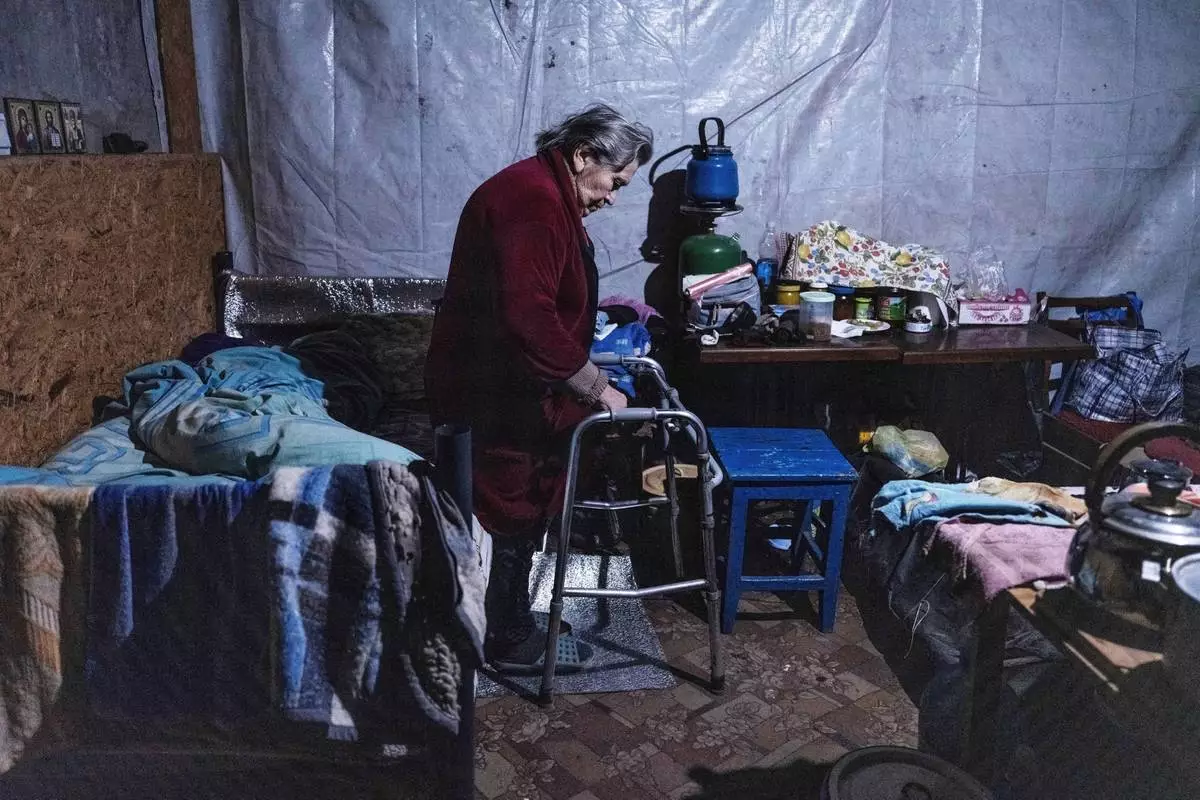
In this photo provided by Ukraine's 93rd Kholodnyi Yar Separate Mechanized Brigade press service, a woman takes shelter in the basement of a multi-apartment building in Pokrovsk, the site of heavy battles with Russian troops, Donetsk region, Ukraine, Tuesday, March 25, 2025. (Iryna Rybakova/Ukraine's 93rd Mechanized Brigade via AP)
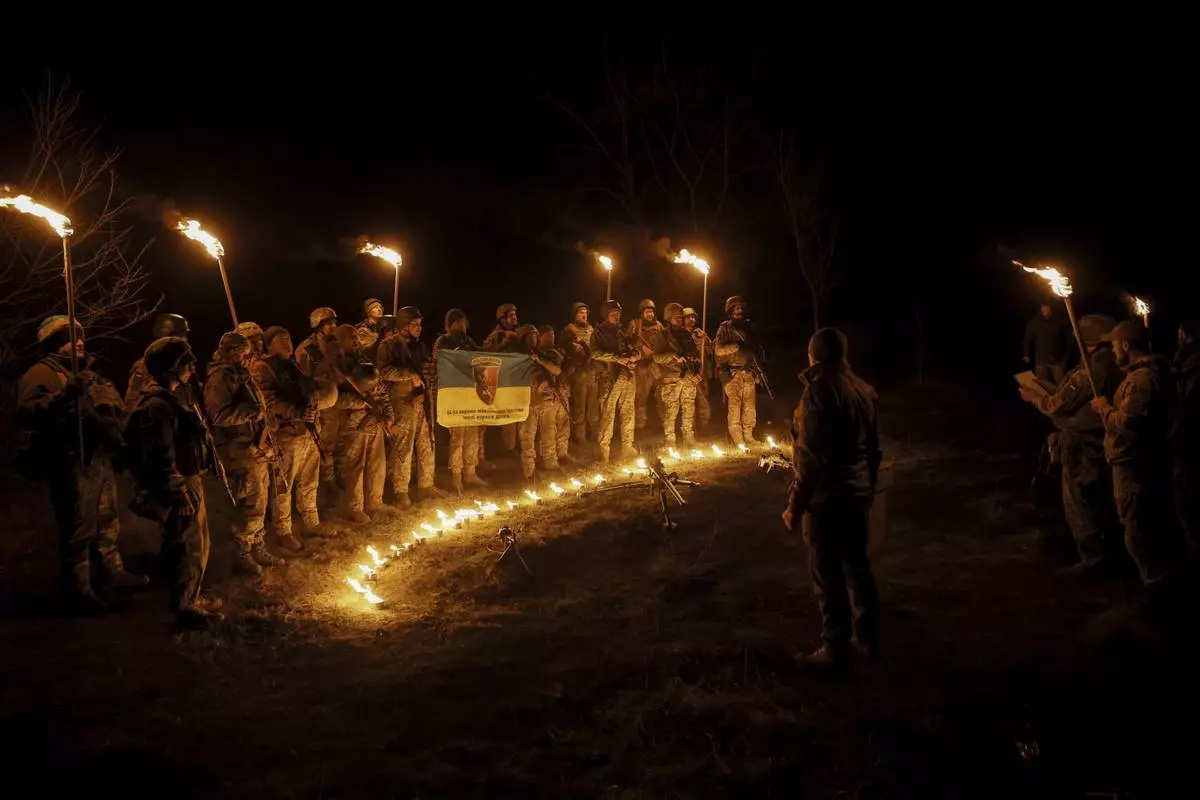
In this photo taken on March 21, 2025 and provided by Ukraine's 24th Mechanized Brigade press service on March 24, 2025, servicemen attend a dedication ceremony for soldiers near the frontline in the Donetsk region, Ukraine. (Oleg Petrasiuk/Ukraine's 24th Mechanized Brigade via AP)
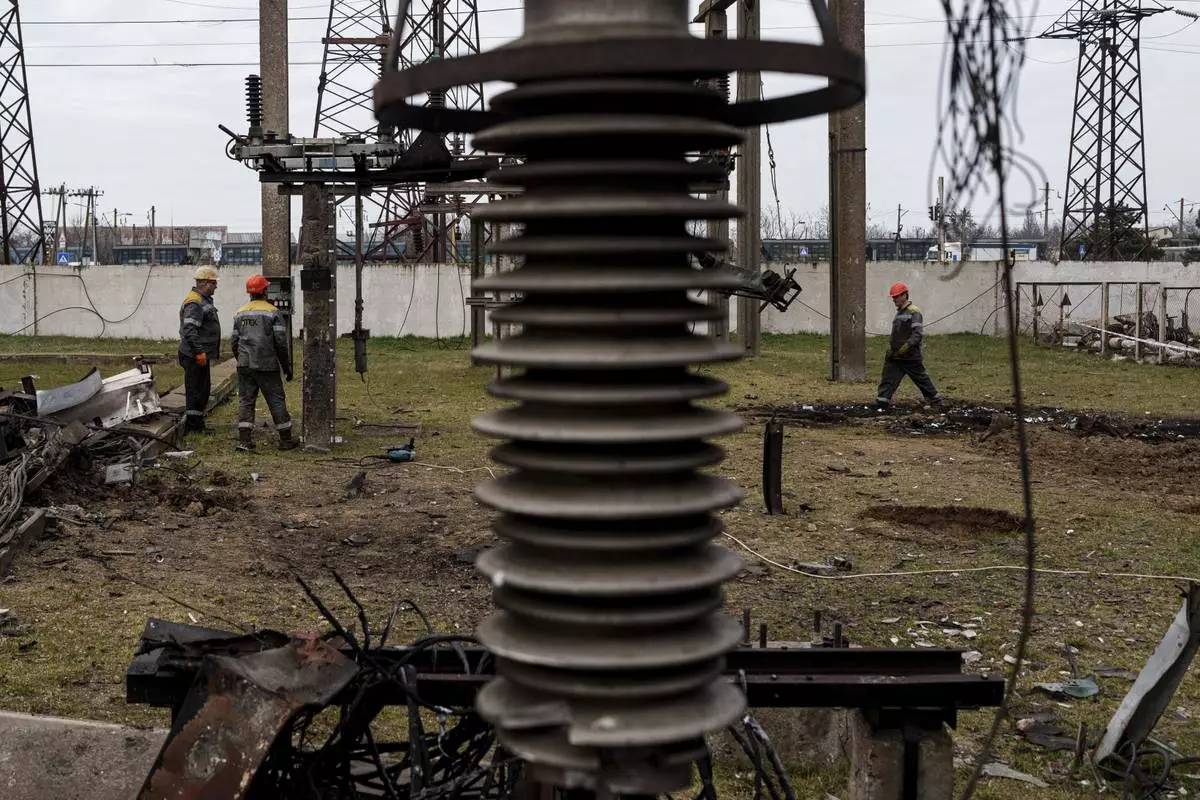
Workers of DTEK company work on a site of a substation destroyed by a Russian drone strike in undisclosed location, Ukraine, March 25, 2025. (AP Photo/Evgeniy Maloletka)
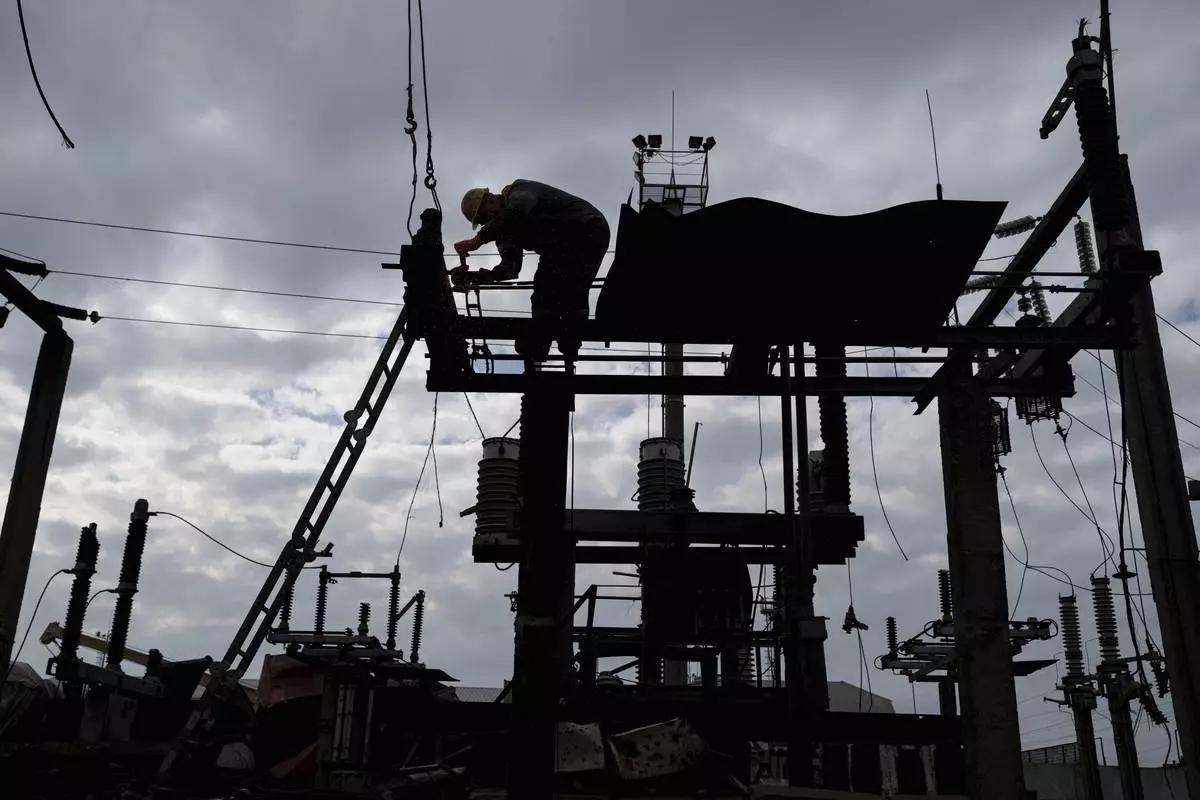
A worker of DTEK company cuts metal structures during repair works of a substation destroyed by a Russian drone strike in undisclosed location, Ukraine, March 25, 2025. (AP Photo/Evgeniy Maloletka)

Ukrainian President Volodymyr Zelenskyy leaves the room after his briefing in Kyiv, Ukraine, Tuesday, March 25, 2025. (AP Photo/Efrem Lukatsky)
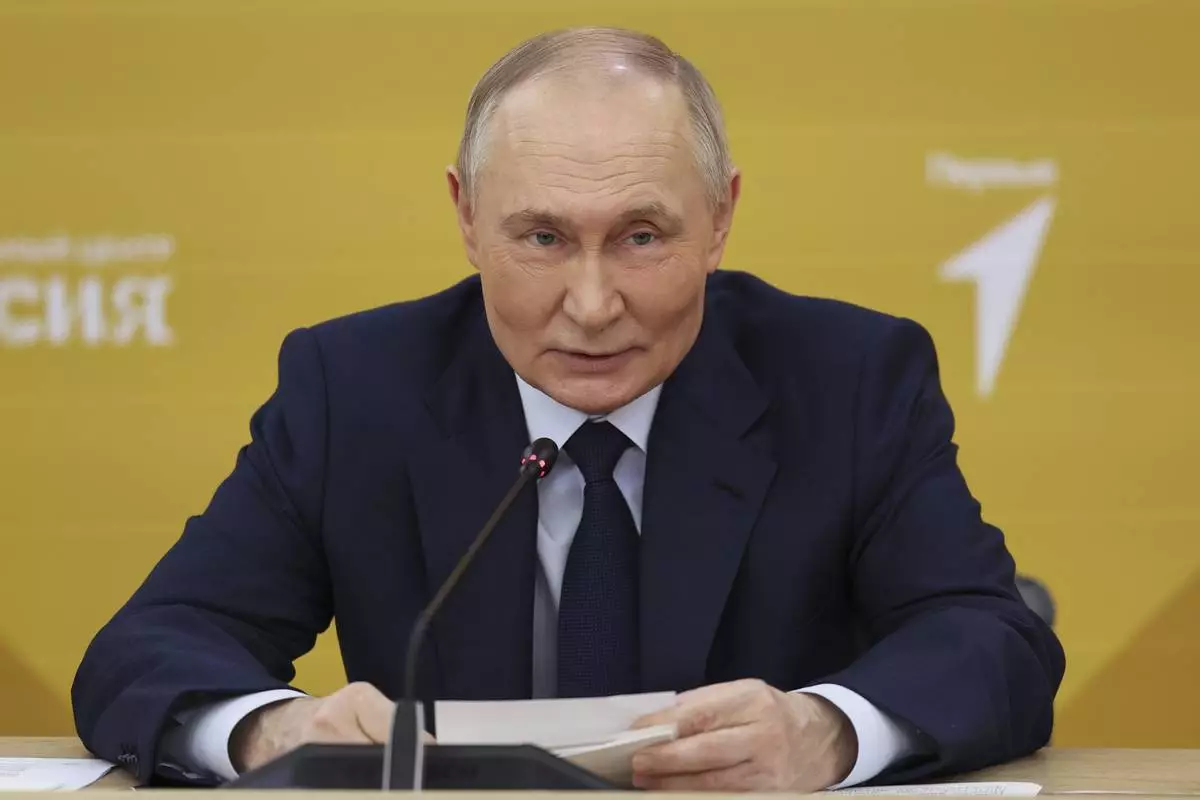
Russian President Vladimir Putin speaks during a meeting of the supervisory board of the Movement of the First, Russian public-and-state children and youth organisation, at the Russia National Centre in Moscow, Russia, Wednesday, March 26, 2025. (Vyacheslav Prokofyev, Sputnik, Kremlin Pool Photo via AP)
DUBAI, United Arab Emirates (AP) — Iran's president said Sunday that the Islamic Republic rejected direct negotiations with the United States over its rapidly advancing nuclear program, offering Tehran's first response to a letter that U.S. President Donald Trump sent to the country's supreme leader.
President Masoud Pezeshkian said that Iran's response, delivered via the sultanate of Oman, left open the possibility of indirect negotiations with Washington. However, such talks have made no progress since Trump in his first term unilaterally withdrew the U.S. from Tehran's nuclear deal with world powers in 2018.
In the years since, regional tensions have boiled over into attacks at sea and on land. Then came the Israel-Hamas war in the Gaza Strip, which saw Israel target militant group leaders across Iran's self-described "Axis of Resistance." Now, as the U.S. conducts intense airstrikes targeting the Iranian-backed Houthi rebels of Yemen, the risk of military action targeting Iran's nuclear program remains on the table.
“We don’t avoid talks; it’s the breach of promises that has caused issues for us so far,” Pezeshkian said in televised remarks during a Cabinet meeting. “They must prove that they can build trust.”
The U.S. State Department, responding to Pezeshkian, said that “President Trump has been clear: the United States cannot allow Iran to acquire a nuclear weapon."
“The president expressed his willingness to discuss a deal with Iran,” it added. "If the Iranian regime does not want a deal, the president is clear, he will pursue other options, which will be very bad for Iran.”
Trump said before Pezeshkian’s comments that he was considering military action and secondary tariffs, if Iran doesn't agree to a nuclear deal.
“If they don’t make a deal, there will be bombing and it will be bombing the likes of which they have never seen before," Trump said in a comment aired Sunday by NBC News.
Having Pezeshkian announce the decision shows just how much has changed in Iran, since his election a half-year ago after he campaigned on a promise to reengage with the West.
Since Trump's election and the resumption of his “maximum pressure” campaign on Tehran, Iran's rial currency has gone into a freefall. Pezeshkian had left open discussions up until Iran's 85-year-old Supreme Leader Ayatollah Ali Khamenei came down hard on Trump in February and warned talks “are not intelligent, wise or honorable" with his administration. The Iranian president then immediately toughened his own remarks on the U.S.
Meanwhile, there have been mixed messages coming from Iran for weeks. Videos from Quds, or Jerusalem, Day demonstrations on Friday had people in the crowds instructing participants to only shout: “Death to Israel!” Typically, “Death to America” was also heard.
A video of an underground missile base unveiled by Iran's hard-line paramilitary Revolutionary Guard also showed its troops stepping on an Israeli flag painted on the ground — though there was no American flag as often seen in such propaganda videos.
But Press TV, the English-language arm of Iranian state television, published an article last week that included listing U.S. bases in the Middle East as possible targets of attack. The list included Camp Thunder Cove on Diego Garcia in the Indian Ocean, where the U.S. is basing stealth B-2 bombers likely being used in Yemen.
“The Americans themselves know how vulnerable they are,” warned Iranian parliamentary speaker Mohammad Bagher Qalibaf on Friday. "If they violate Iran’s sovereignty, it will be like a spark in a gunpowder depot, setting the entire region ablaze. In such a scenario, their bases and their allies will not be safe.”
However, Tehran's two recent direct attacks on Israel with ballistic missiles and drones caused negligible damage, while Israel responded by destroying Iranian air defense systems.
Trump's letter arrived in Tehran on March 12. Though announcing that he wrote it in a television interview, Trump offered little detail on what he exactly told the supreme leader.
“I’ve written them a letter saying, ‘I hope you’re going to negotiate because if we have to go in militarily, it’s going to be a terrible thing,’” Trump said in the interview.
The move recalled Trump’s letter-writing to North Korean leader Kim Jong Un in his first term, which led to face-to-face meetings, but no deals to limit Pyongyang’s atomic bombs and a missile program capable of reaching the continental U.S.
The last time that Trump tried to send a letter to Khamenei, through the late Japanese Prime Minister Shinzo Abe in 2019, the supreme leader mocked the effort.
Trump’s letter came as both Israel and the United States have warned they will never let Iran acquire a nuclear weapon, leading to fears of a military confrontation as Tehran enriches uranium at near weapons-grade levels of 60% purity — something only done by atomic-armed nations.
Iran has long maintained its program is for peaceful purposes, even as its officials increasingly threaten to pursue the bomb. A report in February, however, by the Vienna-based International Atomic Energy Agency, the U.N.’s nuclear watchdog, said that Iran has accelerated its production of near weapons-grade uranium.
Iran's reluctance to deal with Trump likely also takes root in his ordering the attack that killed Iranian Gen. Qassem Soleimani in a Baghdad drone strike in January 2020. The U.S. has said Iran plotted to assassinate Trump over that prior to his election this November, something Tehran denied though officials have threatened him.
Vahdat reported from Tehran, Iran.
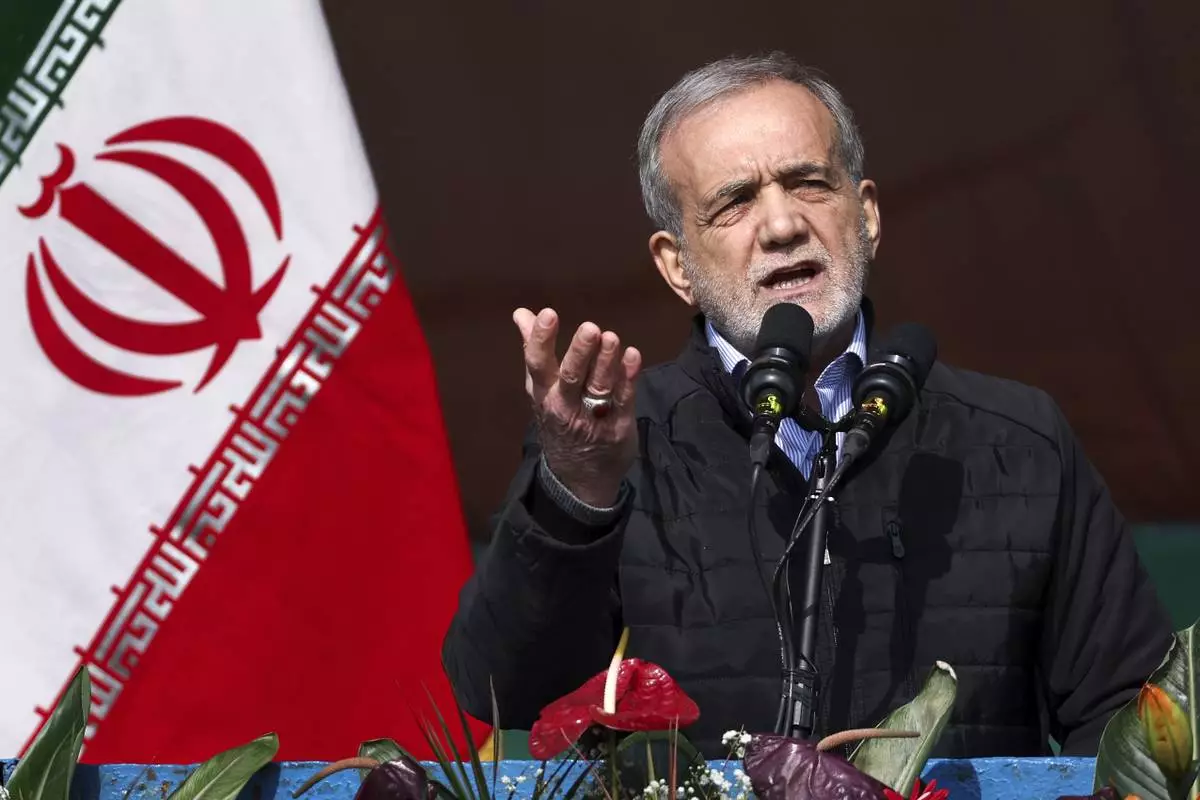
FILE - In this photo released by the Iranian Presidency Office, President Masoud Pezeshkian speaks during a rally commemorating anniversary of 1979 Islamic Revolution that toppled the late pro-U.S. Shah Mohammad Reza Pahlavi and brought Islamic clerics to power, in Tehran, Iran, Monday, Feb. 10, 2025. (Iranian Presidency Office via AP, file)








